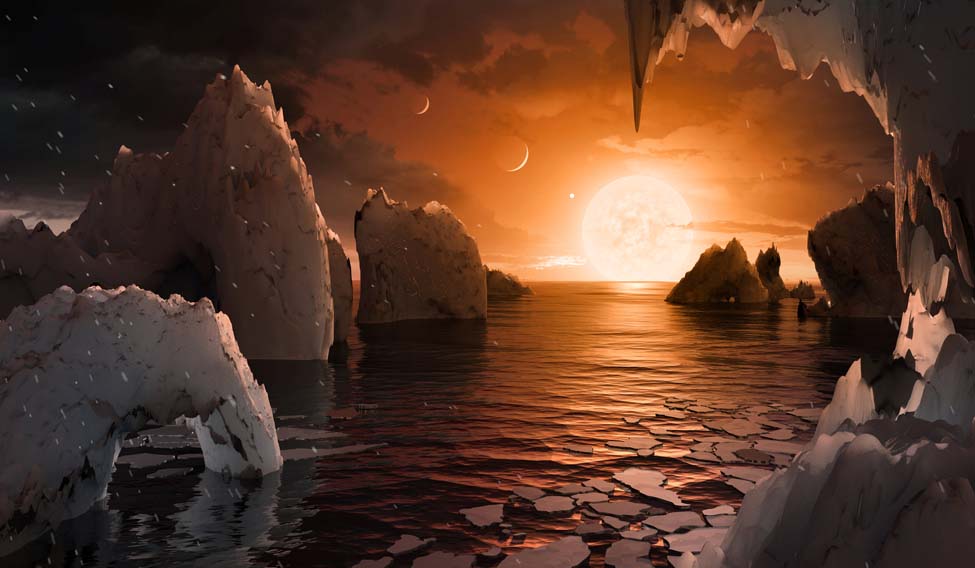At least seven Earth-like planets orbiting the same star 40 light-years away and each may contain liquid water and be able to sustain life, astronomers announced at a news conference at NASA Headquarters here.
A Belgian-led team was able to detect these planets using space and ground-based telescopes as they passed in front of their host, a red dwarf star known as TRAPPIST-1, NBC News reported.
"This is an amazing planetary system, not only because we have found so many planets, but because they are all surprisingly similar in size to Earth," said Michaël Gillon, astronomer from the University of Liège in Belgium and lead author of the paper about the discovery published in the journal Nature.
All seven planets that surround TRAPPIST-1 — which has only about 8 per cent the mass of sun — orbit more tightly to their host than any of the planets in our system are to the sun.
The inner six exoplanets are in such tight orbit that they have temperatures comparable to those on Earth, Mercury, and Venus, astronomers said.
The scientists observations suggest the inner six exoplanets also have a rocky makeup with icy surfaces and atmospheres, and that a such a tightly-wound configuration is necessary for there to be surface water that could sustain life on these exoplanets.
The researchers are also searching for similar star systems to conduct more atmospheric research. Four telescopes named SPECULOOS (Search for habitable Planets EClipsing ULtra-cOOl Stars) based in Chile will survey the southern sky for this purpose, CNN reported.
"This star system will probably outlive us because this type of star evolves slowly. When our sun dies, TRAPPIST-1 will still be a young star and will live for another trillion years," Gillon said.


